Apple iPad Air vs Sony Xperia Tablet Z
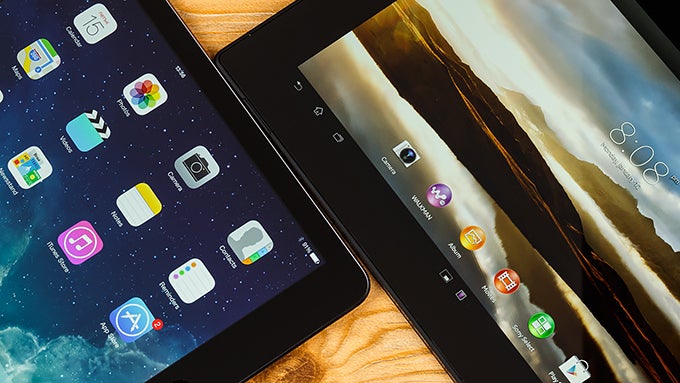
Introduction
The new Apple iPad Air and the ultrathin waterproof Sony Xperia Tablet Z are arguably two of the best designed and premium slates currently on offer, so we are pitting them against each other to ease your choice.
Apple's iPad series basically started the tablet craze, and is still its strongest and most recognizable ambassador amongst users. Android caught up in market share over the span of few years, treading the slate waters with devices at various sizes and price points. It is still lacking badly in the number of tablet-optimized apps compared to iOS, though.
Furthermore, Jony Ive's design team managed to come up with the iPad Air this year - the lightest 10-incher out there, while still keeping the premium aluminum chassis and slenderizing the build even further. When we talk about slender, though, the Xperia Tablet Z is the world's thinnest tablet, and it will work even if you dip it in water, so it has a lot going for it, too. Will that be enough to choose Sony's tablet before Apple's formidable iPad Air? Read on to find out...
Design
As we mentioned in the intro, the fight is between the world's lightest and the world's thinnest 10” slates here, meaning both are engineering marvels on their own take. Sony put a slightly larger 10.1” display compared to the 9.7” one in the iPad, hence the Tablet Z is about an inch taller. It makes up for this with the record slim 0.27” (6.9mm) chassis, though with 0.3” (7.5mm), the iPad Air isn't far behind either.
When it comes to weight, Apple's aluminum slate is just about a pound, or 469 grams – an amazing feat considering that it sports a premium metal chassis. Not that the Xperia Tablet Z isn't very light for a 10-incher, too, at 17.46 oz (495 g), and it also sports a nice soft-touch material for the chassis. That's the weight of a Tablet Z with cellular connectivity, though. The iPad Air version with cellular weighs a bit more than the basic version, at 1.05 pounds (478 g), so we can call the slates about even in industrial engineering.
The rubberized housing of the Tablet Z doesn't look as premium as the precision cut aluminum of the iPad Air, but such a craftsmanship is for a good reason, since Sony's tablet is IP57 certified, meaning you can dip it in up to three feet (1m) of water, and it can stay there for half an hour without any damage. Not that you'll be dipping it pointlessly, but watching movies or browsing for hours in the bathtub becomes possible, and you won't worry about spilling something on the Tablet Z while following recipes off of it in the kitchen. The iPad has a whole satellite universe of accessories, though, so you can quickly make the iPad Air waterproof with a case, too, but it won't be quite as... airy in that case.
As far as the handling experience goes, the aluminum iPad Air is much more slippery than the soft-touch rubber on the back of the Xperia Z, so Sony's tablet is the one allowing a better grip. Both slates, however, are so thin and light for their 10” category, that using tablets with such screen diagonals has never been easier on your wrists.
The buttons on both slates are easy to feel and press, with good tactile feedback. The iPad Air's power/lock key position at the edge is a tad more ergonomic compared to the signature circular metal key of the Xperia Z, as you only have to comfortably extend your index finger to push it. In addition, the volume rocker beneath the Tablet Z's lock key is a bit too thin to be comfortably pressed, and its key travel could be deeper.
Looking further around the sides, Sony's tablet also features tight protective flaps on top of the memory card, headphone and charging ports, which have to be closed tight for the waterproof certification to do its deed. Since the iPad Air doesn't have expandable memory, its only openings are the Lightning port and an audio jack. The iPad also doesn't sport the Xperia Z's infrared sensor, which comes in handy to control home electronics with the tablet, and has an accompanying app that can schedule and switch to TV shows for you, if your cable provider supports this feature. Sony offers a quad-speaker system on its tablet, with two small opening on the sides, and two at the bottom, while the iPad has two speakers flanking the Lighning port.
Displays
The 9.7” iPad Air has hands down a better display than the one that comes with the Xperia Z, as it is equipped with perhaps the best tablet screen out there. We aren't talking only about the excellent 2048 x 1536 pixels resolution and 264ppi pixel density, as there are tablets with more pixels and higher densities. What we mean is that the display shows very realistic colors. It sports in-cell touch technology, which means the touch layer is woven directly in the screen panel itself, returning a sharp and very bright image.
The Xperia Tablet Z still sports a very nice 10.1” display with 1920x1200 pixels of resolution, which returns a decent, 224ppi pixel density. The colors look a bit washed out while in the interface or apps, but Sony's Mobile BRAVIA Engine 2 bumps up the contrast and makes them more saturated when showing pictures or video. The on-cell touch tech removes the typical air gap between the touch layer and the display, reducing reflections and increasing backlight throughput, but not at the level the in-cell touch package of the iPad Air does it. In addition to the higher peak brightness of the iPad Air compared to the Tablet Z, which comes very handy outdoors, the iPad also sports much lower minimum brightness, so it is more comfortable on your eyes in complete darkness.
As for viewing angles, both tablets perform admirably, with contrast and brightness starting to noticeably shift only at extreme angles, which is good if you are sharing your tablet screen with someone.
Interface and functionality
The iPad Air sports the latest iOS 7, while Sony's Tablet Z is still waiting on Android 4.3, and even that will be a step below the recent 4.4 KitKat release. Sony's own Socialife interface overlay, however, has enough features to make it stick as it is.
The Small Apps suite, for instance, pins hovering windows on top of the interface to aid with multitasking, and includes seven apps or widgets you can detach and float on top of whatever else you are doing underneath. The infrared sensor at the top of the tablet is put to good use with a dedicated floating app that lets you control your TV while working on something else, and the remote app has manual programming function in case a brand or make isn't in the list.
Android's versatile interface and widget system are pitted here against the much improved notification and control centers on the iPad, which get called with a down or up swipe, respectively. With event and weather notifications covered, and connectivity and brightness toggles plus music player management conveniently located, one can argue iOS 7 meets Android's notification bar versatility now.
The widget system remains an incredibly helpful tool, though, especially on the large screen real estate of tablets, whereas with iOS 7 you still have to constantly go in and out of apps. Multitasking is greatly improved in Apple's latest mobile OS version, allowing you to quickly switch between the apps used at the moment.
Processors and memory
Being announced way back in January, the Tablet Z sports a quad-core 1.5 GHz Snapdragon S4 Pro chipset with Adreno 320 GPU. That's no match for Apple's A7 beast, which sports 64-bit architecture, vastly improved graphics compared to the previous A6X chip, and a dedicated M7 co-processor for always-on motion sensing tasks. The A7 excels in benchmarks, and is tightly woven with iOS 7, which has been optimized on the system level for the 64-bit processing.
This integration harmony between hardware and software that only Apple can offer, and the lack of tasking interface elements like Android's widget system, allows the iPad Air to perform admirably with 1 GB of RAM, whereas the flagship standard on the Android side is now 2 GB, exactly what the Tablet Z sports. You can, however, notice choppiness in the Tablet Z interface as well as some lag going in and out of apps, whereas the interface and apps simply fly on the iPad Air.
Still, Sony's tablet sports a notable advantage before the iPad, as it features an easily accessible microSD slot for storage expansion, in addition to the 16 GB of internal memory. This way you can load a few seasons of your favorite TV shows on the tablet, and watch them mid-air, while with the 16 GB iPad, a couple of interactive magazines from the Newsstand app, and you quickly start running out of storage, while additional storage tiers are rather pricey.
Internet and connectivity
Apple's Safari browser is vastly improved in iOS 7, offering faster and sleeker browsing than ever before. It sports a few extra features like Reading Mode, that strips articles of distracting elements such as ads or pictures, and its text reflow is superb, snapping the paragraphs with tiny margins on the sides, to make reading even easier on the eyes with the excellent Retina Display.
The default browser on the Xperia Tablet Z is Chrome, and Sony doesn't provide its own stock browser like Samsung or LG do. Mobile Chrome has been getting much faster and better lately. If you long for Adobe Flash support, though, you'd have to grab another browser from the Play Store and sideload Flash.
Besides the basic Wi-Fi versions, both tablets have options with 4G LTE and 42 Mbps HSPA+ connectivity, but the iPad Air supports record 14 LTE bands, against the Xperia Z's pentaband LTE support, making it the perfect globetrotting tablet out there.
The Wi-Fi Tablet Z sports GPS radio, which lacks on the basic iPad Air, and only exists on Air versions with cellular connectivity. NFC and an infrared emitter are the other options that the Tablet Z has before the Air, while both devices sport Bluetooth 4.0.
As for wired connectivity, the Xperia Z's MHL port and Apple's Lightning one let you hook the tablets to a TV via the respective adapter cables.
Cameras
Sony put last year's 8 MP Exmor R sensor in the Tablet Z, skipping on the LED flash, which we can't say we miss that much on a slate. The iPad Air's 5 MP camera doesn't sport a flash, either.
The Tablet Z's camera app offers the full monty of Sony's shooting modes, like Intelligent Auto, Sweep Panorama, HDR, Burst Shot, nifty color effects and so on. The iPad Air has a very simplified interface, giving you only two options - turn on the HDR mode, and snap square-shaped photos.
Pictures from the Sony Tablet Z turn out rather soft and lacking detail from aggressive noise suppression, plus they are quite oversaturated - two features that Sony's mobile camera software settings seem to never be able to shake off lately. The iPad Air churns out quite pleasant photos when there's plenty of light around, with enough detail, a tad saturated colors, and decent automatic exposure.
Noise and blur naturally creep up indoors when the light dims down, sometimes to unacceptable levels with the iPad Air. Photos from the Tablet Z also get rather noisy in such conditions, too, so make sure there's plenty of light before you snap a shot with any of the two tablets indoors.
Video is captured with Full HD resolution and fluid 30fps by both slates. On the Tablet Z it exhibits the same smudgy, oversaturated looks as the still shots, while the iPad Air records pretty decent footage, with no visible artifacts, vivid colors, and enough detail.
We get a 2.2 MP front-facing shooter for video chat on the Xperia Tablet Z, which is able to record 1080p video in its turn, while the Air's 1.2 MP shooter sticks with HD resolution on your video chat sessions.
Multimedia
Photo editing options are built into the galleries on both tablets, and the media content is categorized into albums, with thumbnail previews for both pics and videos. The iPad Air breaks them down by date and location, too.
Sony's simple, minimalistic music player graces the Tablet Z with the usual Walkman branding, and offers a set of equalizer presets, Sony's xLOUD bass-enhancements, and the new S-Force 3D virtual surround sound mode, made possible by the four tiny speakers in the tablet's bottom corners.
While the quad-speaker system isn't very loud, the output is still pretty decent, and the touted surround sound modes like Studio or Club do make a difference. Sony also offers Clear Stereo, Clear Phase and Dynamic Normaliser options for minimizing cross talk, automatically setting the sound quality of the internal speakers, and averaging out the volume of songs, movies and so on, playback.
The new iOS 7 music player introduces a flatter, more minimalistic design, and now features iTunes Radio, which is Apple’s very own streaming music
service that’s similar to Pandora. The two speakers surrounding the Lightning port are pretty strong for tablet ones, and sound very clean, too.
The Tablet Z plays every major video format, including DivX/Xvid/MKV, up to Full HD definition right out of the box, with no need to download an additional app, except for the extra features. The iPad Air, being an iOS device, requires you to convert some of those formats first, before they can be played with the stock video application.
Batteries
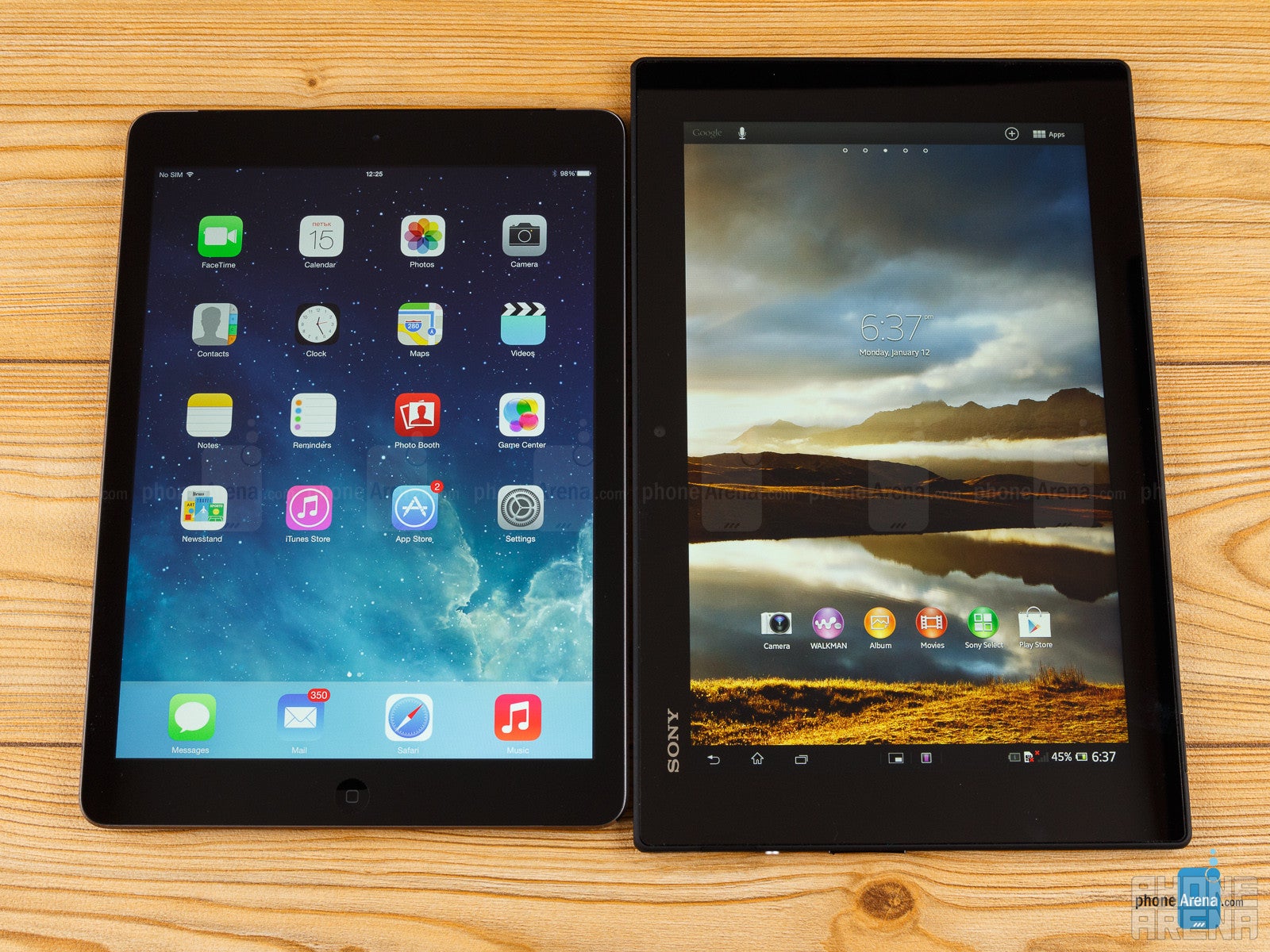
Conclusion
We can call the exterior design a draw with two incredibly well-made tablets like the iPad Air and the Xperia Tablet Z, both of which are at the top amongst the thinnest, lightest 10-inchers out there. The chassis materials are a matter of personal preference between a beautifully crafted but somewhat slippery aluminum on the iPad Air, and the rubbery but waterproof body of the Tablet Z.
The advantages of Sony's Xperia Tablet Z over the iPad Air, besides the watertight chassis, are the expandable memory, IR blaster and the tad lower price. Currently hovering close to the $400 mark for the basic Wi-Fi version with 16 GB, Sony's tablet storage can be expanded with a 64 GB memory card for $50 extra, whereas a 64 GB iPad will run you $699, but the difference between the basic versions is only $100.
When it comes to screen quality and speed, however, iPad Air has the upper hand with brighter, more resolute display that flaunts very accurate color representation, and blazing fast 64-bit processor. When we couple those two main tablet selling points with the close to half a million apps written specifically to be viewed on an iPad, then the Tablet Z would be chosen before the iPad mainly for the price, or if you are certain you'll need some of its extra features.
Despite the relatively weak processor, the Xperia Tablet Z is holding up very well to the formidable iPad Air, mostly thanks to Sony's industrial design mojo. Thus you can't really go wrong with either tablet in terms of design and features, but we can only hope Google's recent push for developing more tablet-oriented apps will give results quick, so as Android slates can stand up to the iPad in the software department, too.

Follow us on Google News

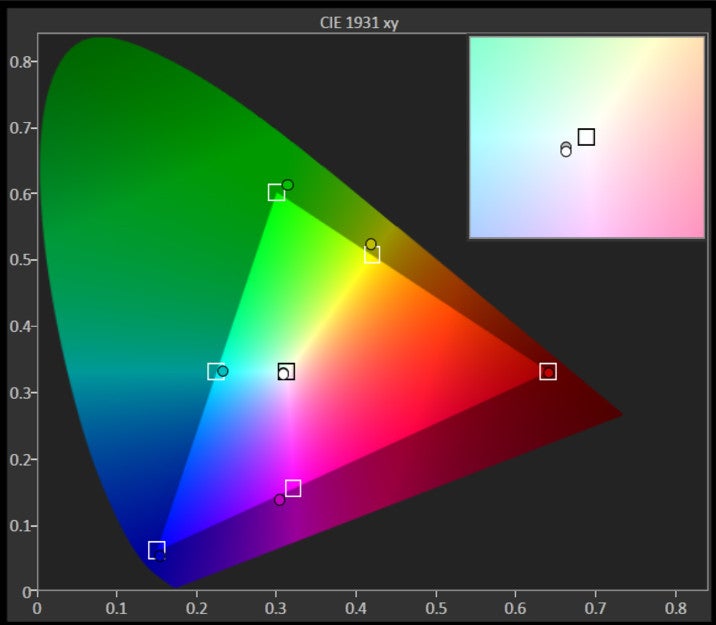






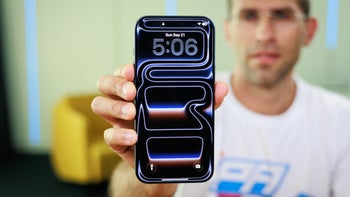
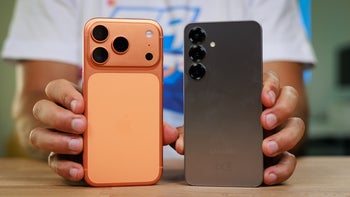
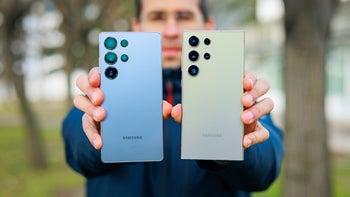
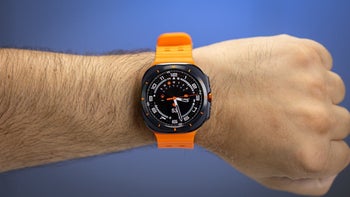
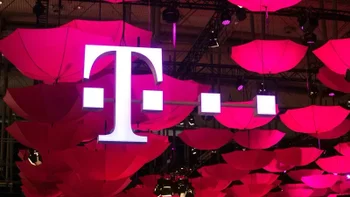
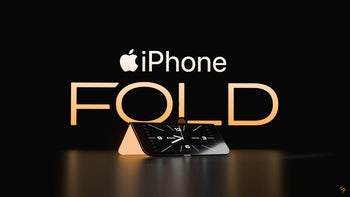
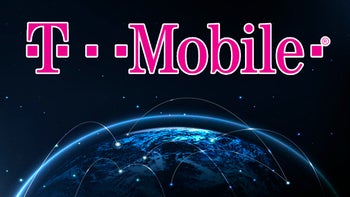
![A new Android bug is making it impossible to install new apps. Are you affected? [UPDATE]](https://m-cdn.phonearena.com/images/article/176703-wide-two_350/A-new-Android-bug-is-making-it-impossible-to-install-new-apps.-Are-you-affected-UPDATE.webp)
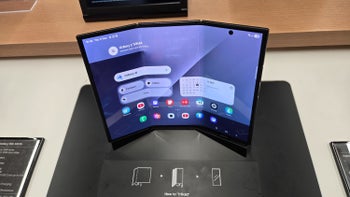
Things that are NOT allowed:
To help keep our community safe and free from spam, we apply temporary limits to newly created accounts: